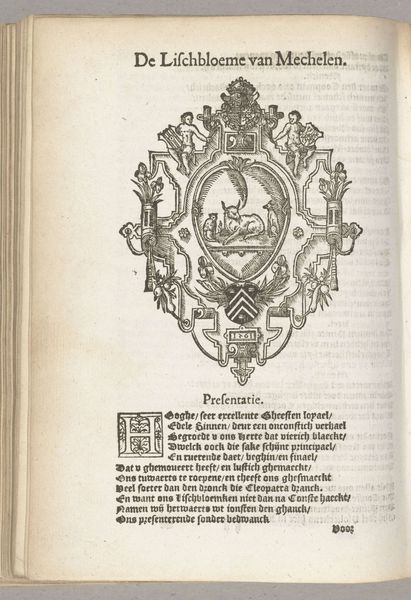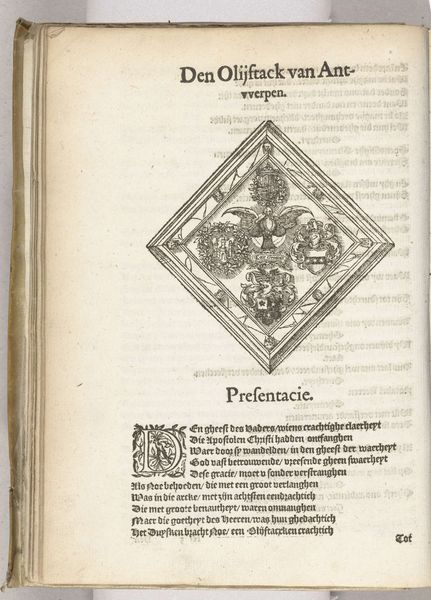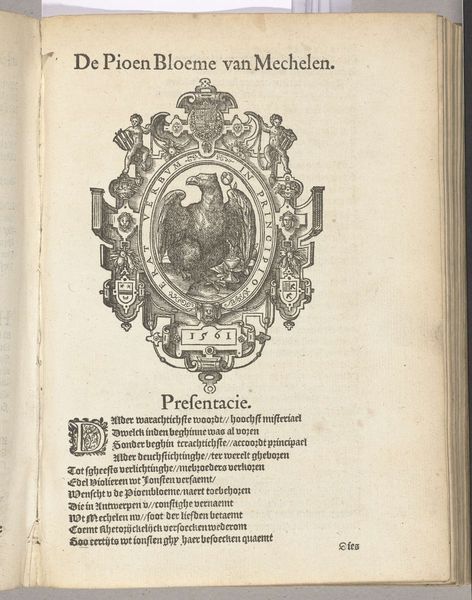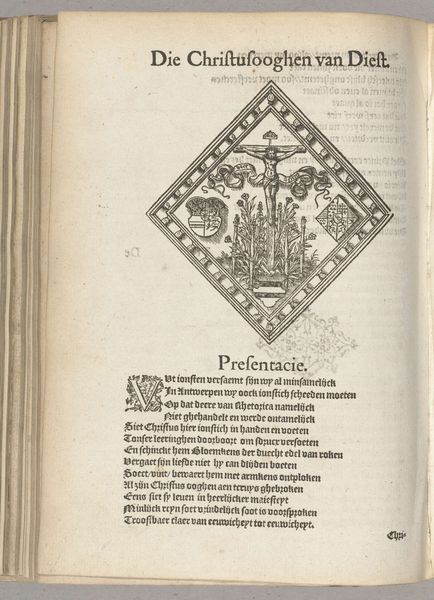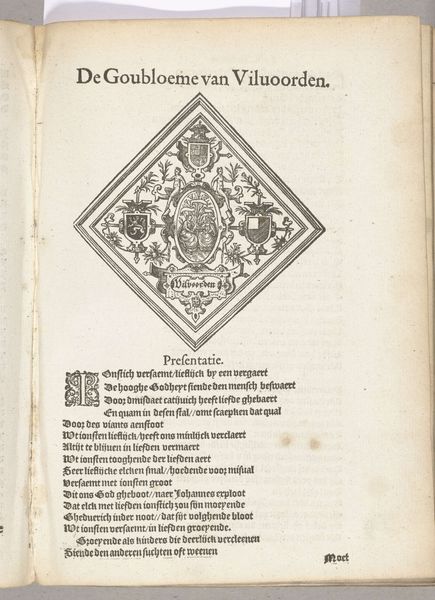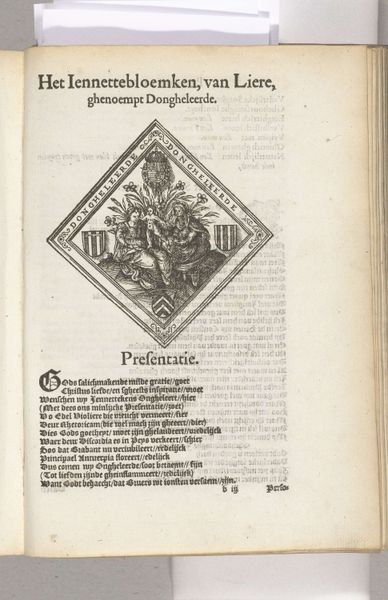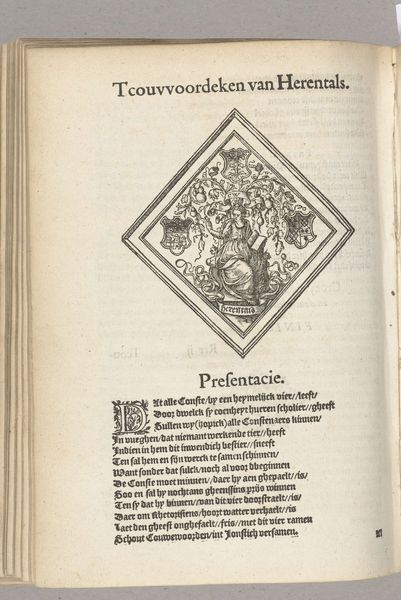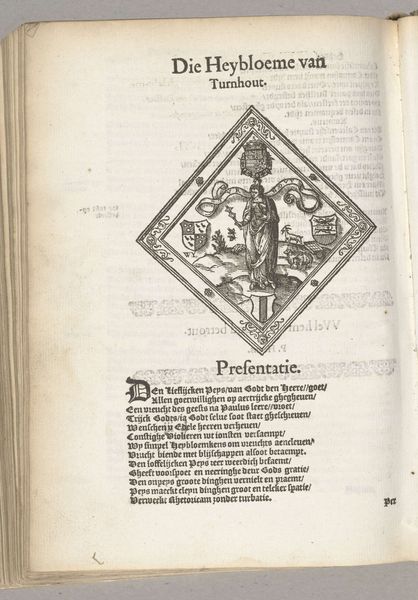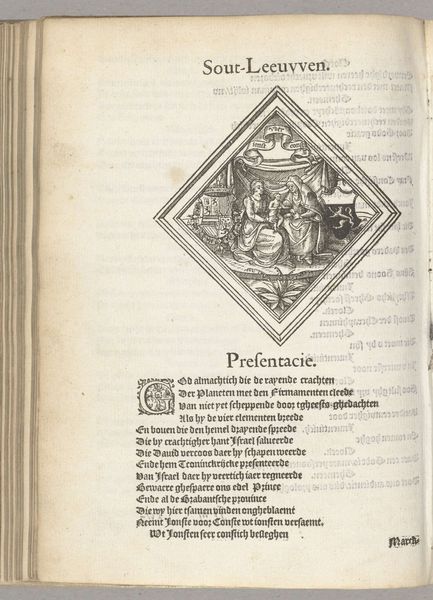
print, textile, paper, ink, woodcut
# print
#
textile
#
figuration
#
paper
#
ink
#
woodcut
#
northern-renaissance
Dimensions: height 217 mm, width 153 mm
Copyright: Rijks Museum: Open Domain
Curator: I'd like to introduce our listeners to a printed page dating back to the 1560s, titled "Vertoning van De Goudbloem (Antwerpen), 1561.” This piece appears to be a woodcut, using ink on paper. Editor: It has a decidedly mournful, solemn quality about it, even just looking at the crisp lines and dense texture. I sense loss, or maybe remembrance. Curator: The work centres around a prominent diamond-shaped frame enclosing the Virgin and Child, replete with ornate, symbolic details common during the Northern Renaissance. Note the use of typography surrounding the image, as well. Editor: It’s intriguing how the textile design feels simultaneously flat and rich. You can see the textures created by the woodcut technique; each line speaks to the labor involved in its production and, likely, mass dissemination as it would appear to have been a printed piece, rather than unique. Curator: The 'Goudbloem,' or 'Marigold', as it translates, certainly held potent symbolism during that era, commonly associated with sorrow, and the Passion of Christ. The flower's golden hue can symbolize the divine light breaking through the darkness of earthly suffering. Editor: The marigold is doing some heavy lifting there, bearing that weight across time, in this form. Were these sheets intended for personal devotional practice or wider distribution as a memorial of some kind? Were they affordable enough to be considered something of a mass produced comfort object? Curator: Very perceptive question, they provide context regarding cultural consumption. This piece acts as a locus of collective memory, as this image circulated and was likely used by families. It would make sense this way as they often offer solace by encoding loss and shared religious and cultural values. Editor: So, more than a mere aesthetic artifact, it’s an index of societal beliefs made tangible by relatively advanced material production methods for the period. Fascinating. Curator: Indeed. Its enduring appeal resides, perhaps, in that tension: a delicate artwork born of communal labor and belief.
Comments
No comments
Be the first to comment and join the conversation on the ultimate creative platform.
